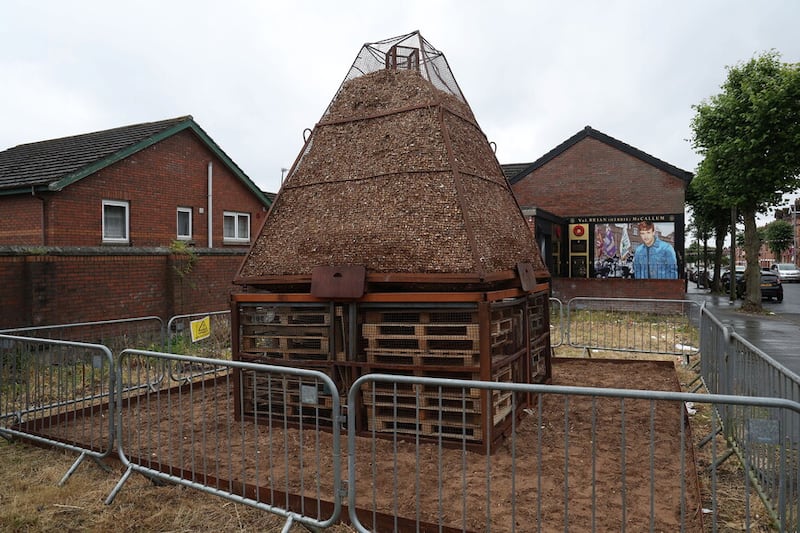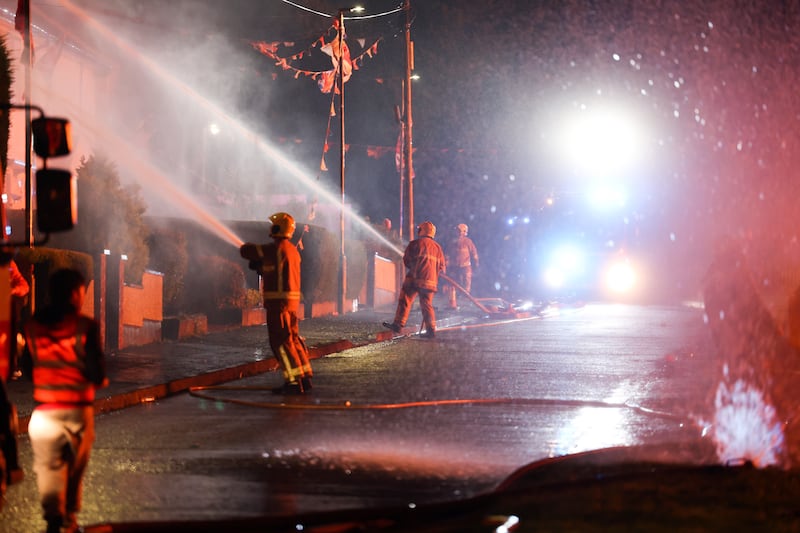Culture is defined as the customs and beliefs, art, way of life, and social organisation of a particular country, community or group.
The value of cultural traditions is determined by the group that practices them, regardless of whether outsiders see them as positive or negative. However, there are limits to this relativist approach when certain cultural endeavours conflict with the laws and values of wider society.
Eleventh Night bonfires have been part of unionist culture in this part of Ireland for decades, if not centuries.
In pictures - Eleventh Night bonfires
It's said the tradition began with the beacons that were lit in 1690 to mark the arrival of King William ahead of the Battle of the Boyne.
These days they tend to be associated with 'loyalist' working class communities.
Eleventh Night bonfires have only really become contentious in the past 20 years or so, as awareness of their environmental damage has increased and latterly as social media has highlighted cases where material is placed on bonfires to deliberately antagonise.
Read more:
What are eleventh night bonfires in Northern Ireland?
Loyalist cultural group says bonfire hate display was hung by 'over-exuberant' youths
It's arguably just a small minority of Eleventh Night bonfires that are controversial, yet it is those where effigies, election posters and flags are burned that help taint the reputation of all.
The response from the unionist establishment to this sectarian, anti-social and environmentally-damaging behaviour has been wholly inadequate.
Initiatives like Belfast City Council's £500,000 bonfire diversion funding have sought to partially regulate and detoxify Eleventh Night celebrations but with only limited success.

The displays at the bonfire site near Lisnasharragh Leisure Centre in east Belfast highlighted by The Irish News last month and more examples over recent days demonstrate that the practice of bedecking bonfires in gratuitously offensive material prevails.
Meanwhile, in many instances, interventions by the Fire Service and other statutory bodies have also been questionable. Dousing properties with water to prevent them going on fire or boarding up public buildings while nearby pyres rage is perversely counterintuitive but not uncommon.

And let's not forget the health and safety risks that in recent years have led to death and serious injury.
A corresponding tradition of lighting bonfires has existed within the nationalist community, though nowhere near on the same scale.
Historically, bonfires were lit on August 15 to mark the Feast of the Assumption and, since the early days of the Troubles, on August 8 to commemorate the introduction of internment. Only a handful of these bonfires remain, the most high profile of which is in Derry, where last year poppy wreaths, flags and an image of Queen Elizabeth were placed on the fire.
Nationalist politicians have been quick to condemn such displays and have proactively worked to discourage the building and lighting of bonfires. Regrettably, their unionist counterparts are less unequivocal and appear reluctant to challenge those responsible about environmental destruction, hatred and the flagrant waste of money in burning thousands of pallets.
Only this week, DUP MP Sammy Wilson tabled a motion at Westminster congratulating the bonfire builders of Craigyhill in Larne. The contrast in how unionist and nationalist politicians deal with the problem is telling.
Failure to adequately debate the merits of regulating bonfires and in some cases outlawing them completely is a dereliction of duty on unionist politicians' part, as it is largely their constituents who suffer through intimidation, ill-health and the destruction of their neighbourhoods.
Many cultural practices that are no longer deemed acceptable have been confined to history yet the communities in question have continued to thrive. It is not unreasonable or sectarian to question misguided behaviour or something that is objectively harmful; in fact, such criticism and debate is crucial in a modern democracy.








